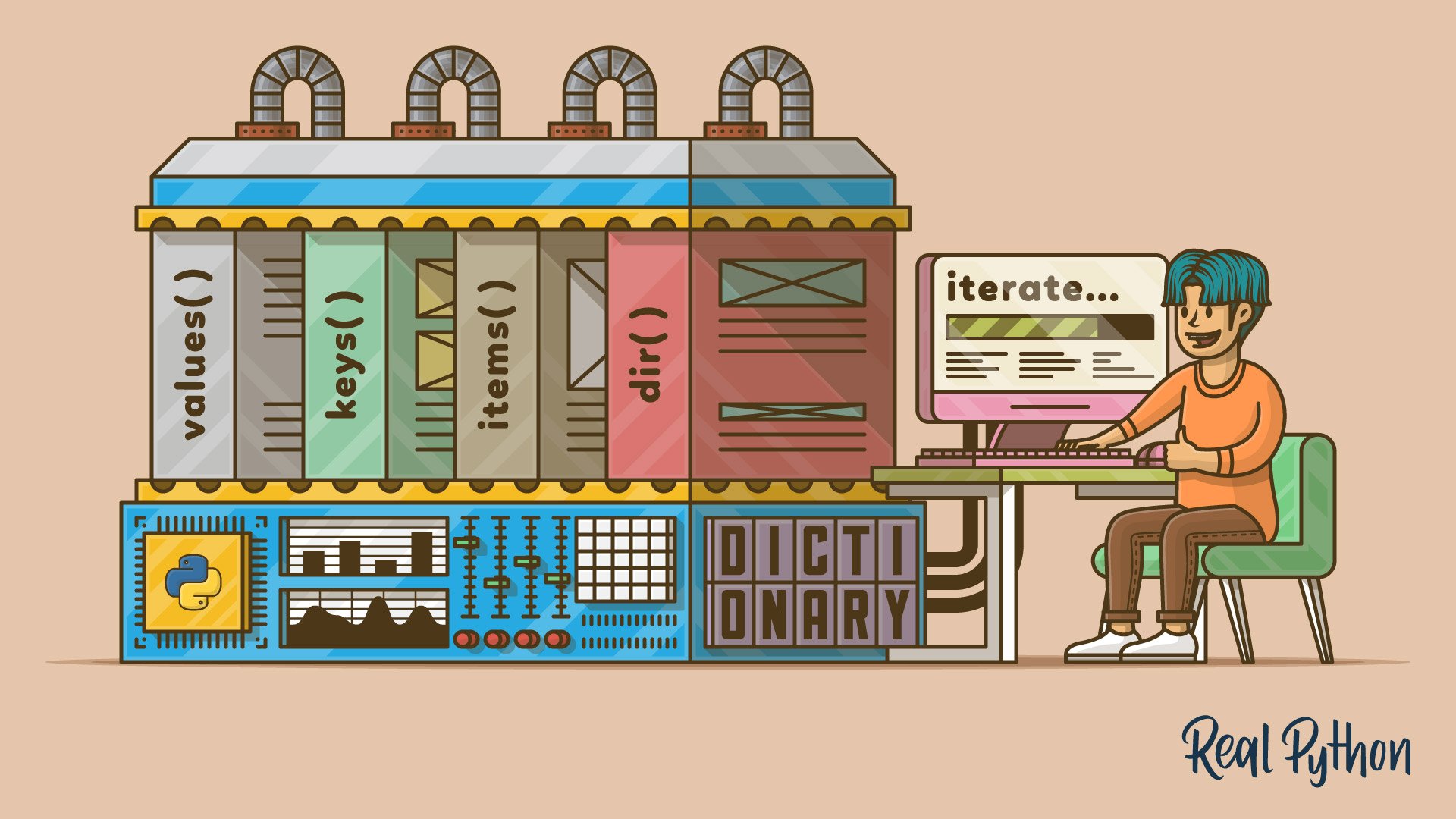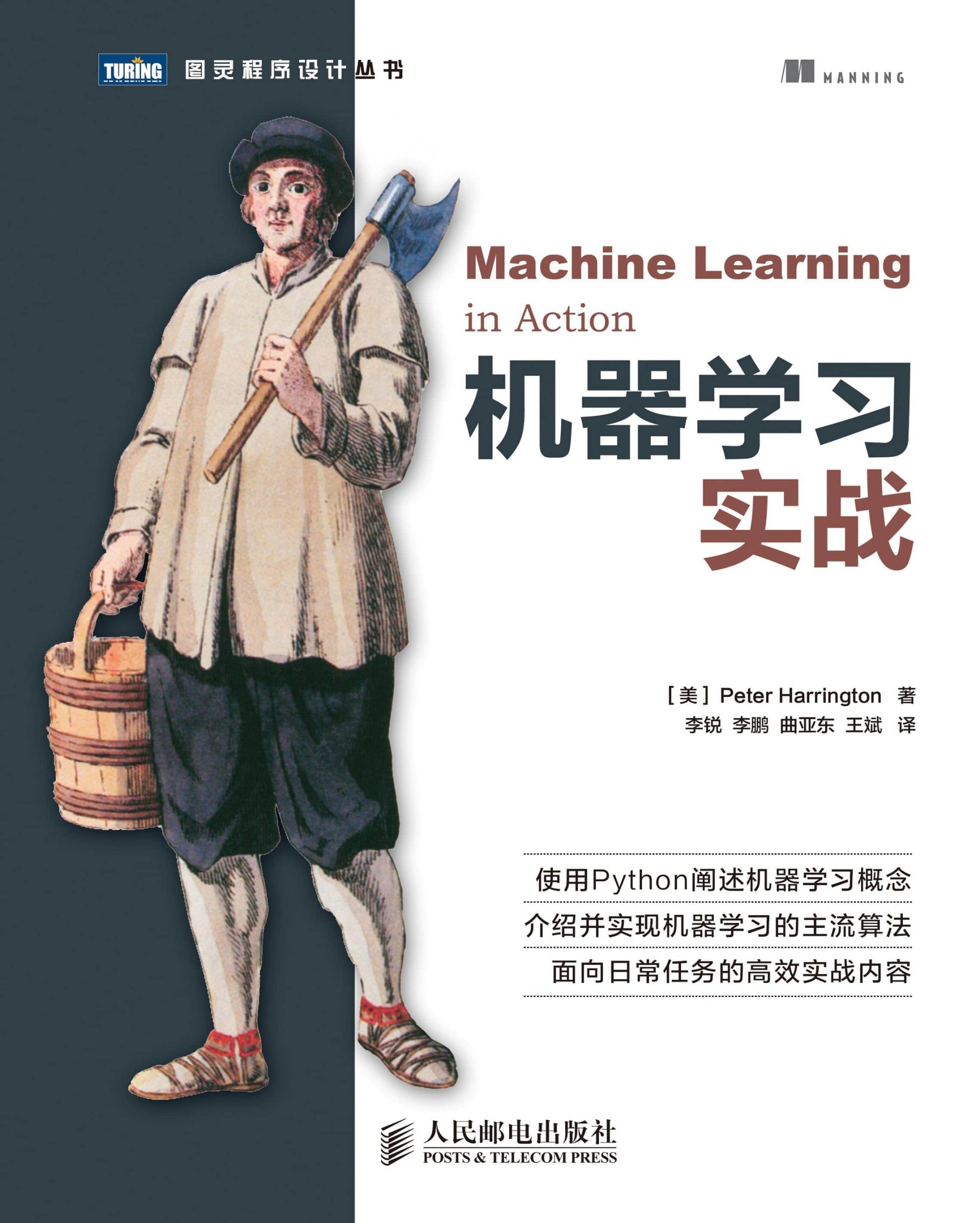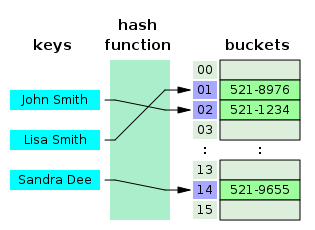Dictionary Changed Size During Iteration
Dictionaries are a fundamental data structure in Python that allow you to store and retrieve data in the form of key-value pairs. They are also commonly known as associative arrays or hash tables in other programming languages. In Python, dictionaries are enclosed in curly braces {} and each item in the dictionary is separated by a comma.
The keys in a dictionary must be unique, and they are used to access their respective values. The values in a dictionary can be of any data type, such as integers, strings, lists, or even other dictionaries. Dictionaries provide a fast way to retrieve and update data, as they use a hashing mechanism to store and locate values based on their keys.
When iterating over a dictionary in Python, the iteration process is based on the keys of the dictionary. By default, iterating over a dictionary using a regular for loop will iterate over the keys of the dictionary. For example:
“`python
my_dict = {‘name’: ‘John’, ‘age’: 25, ‘city’: ‘New York’}
for key in my_dict:
print(key, my_dict[key])
“`
Output:
“`
name John
age 25
city New York
“`
In this example, the for loop iterates over the keys of the `my_dict` dictionary, and the `key` variable is assigned the value of each key in each iteration. By using the key, we can access the corresponding value in the dictionary.
Understanding the concept of dictionary resizing during iteration
In Python, dictionaries have a dynamic size and can automatically resize themselves when needed. This resizing is done internally by the dictionary implementation to ensure efficient memory usage. When the number of items in a dictionary exceeds a certain threshold, the dictionary will resize itself by creating a new underlying data structure with a larger size and rehashing all the existing items.
Dictionary resizing happens transparently to the user, and in most cases, it doesn’t cause any issues. However, problems can arise when a dictionary is resized during iteration. This is because the iteration process relies on the number of items in the dictionary and the internal data structure.
Consequences of resizing dictionaries during iteration
Resizing a dictionary during iteration can lead to unexpected and incorrect behavior. The primary consequence is that it can cause the iteration to skip some items or repeat others. This happens because the internal state of the dictionary changes as it resizes, and the iteration process may not correctly handle these changes.
For example, let’s consider a scenario where we want to delete some specific items from a dictionary while iterating over it:
“`python
my_dict = {‘A’: 1, ‘B’: 2, ‘C’: 3, ‘D’: 4}
for key in my_dict:
if key == ‘B’ or key == ‘C’:
del my_dict[key]
print(key, my_dict[key])
“`
Output (unexpected behavior):
“`
A 1
D 4
“`
In this example, the intention was to delete the items with keys ‘B’ and ‘C’ from the dictionary. However, due to the resizing that occurs during iteration, only the item with key ‘B’ is deleted, and the iteration skips the item with key ‘C’. This can lead to incorrect results and potentially cause bugs in your code.
Identifying scenarios that can trigger dictionary resizing
While dictionary resizing during iteration can happen in various scenarios, there are specific actions that are more likely to trigger it. Some common scenarios include:
1. Adding or deleting items from the dictionary during iteration: Any modification to the dictionary’s structure can potentially trigger resizing.
2. Changing the values of dictionary keys during iteration: If the values of the keys change dynamically, it can lead to dictionary resizing.
3. Nesting or recursively iterating over dictionaries: When dictionaries are nested or iterated over recursively, resizing can occur at different levels.
4. Performing concurrent or parallel operations on the dictionary: If multiple threads or processes are modifying the dictionary simultaneously, it can trigger resizing during iteration.
Best practices to avoid dictionary resizing during iteration
To avoid the issues related to dictionary resizing during iteration, it is recommended to follow these best practices:
1. Create a separate copy of the dictionary for iteration: By creating a copy of the dictionary before iterating over it, you can ensure that any modifications made to the original dictionary won’t interfere with the iteration process.
“`python
my_dict = {‘A’: 1, ‘B’: 2, ‘C’: 3}
for key in my_dict.copy():
…
“`
2. Use the `items()` method for iteration: The `items()` method returns a view object that provides a consistent and unaffected view of the dictionary’s items, even if resizing occurs.
“`python
my_dict = {‘A’: 1, ‘B’: 2, ‘C’: 3}
for key, value in my_dict.items():
…
“`
3. Collect the keys to be modified and perform modifications after iteration: Instead of modifying the dictionary during iteration, collect the keys to be modified in a separate list or set, and perform the modifications after the iteration is complete.
“`python
my_dict = {‘A’: 1, ‘B’: 2, ‘C’: 3}
keys_to_delete = []
for key in my_dict:
if some_condition:
keys_to_delete.append(key)
for key in keys_to_delete:
del my_dict[key]
“`
Techniques to handle dictionary resizing if unavoidable
In some cases, dictionary resizing during iteration is unavoidable, either due to the nature of your program or external factors. In such situations, it is essential to handle the resizing correctly to minimize any potential issues. Here are some techniques you can use:
1. Use a try-except block to handle KeyError: If resizing causes an item to be skipped during iteration, it may raise a `KeyError` when accessing the corresponding value. By using a try-except block, you can catch this exception and handle it appropriately.
“`python
my_dict = {‘A’: 1, ‘B’: 2, ‘C’: 3}
for key in my_dict:
try:
value = my_dict[key]
except KeyError:
# Handle the KeyError
“`
2. Use a flag or sentinel value to mark deleted items: Instead of deleting items from the dictionary directly, you can modify the values of the items you want to delete. For example, you can set them to a special value like `None` or use a flag to mark them as deleted. Then, in subsequent iterations or when accessing the dictionary, you can check for these special values and handle them accordingly.
3. Break the iteration loop and restart after resizing: If you’re dealing with a complex iteration scenario where resizing is unavoidable, you can break the loop when resizing is detected and restart the iteration from the beginning. This ensures that all items are properly processed despite resizing.
Examples and demonstrations of dictionary resizing during iteration in Python
1. Dictionary changed size during iteration:
“`python
my_dict = {‘A’: 1, ‘B’: 2, ‘C’: 3}
for key in my_dict:
if key == ‘B’:
del my_dict[key]
my_dict[‘D’] = 4
print(key, my_dict[key])
“`
Output:
“`
A 1
C 3
D 4
“`
In this example, the dictionary is resized during the iteration by deleting item ‘B’ and adding item ‘D’. The iteration correctly handles the resizing, and all items are processed.
2. Delete key in dictionary Python while iterating:
“`python
my_dict = {‘A’: 1, ‘B’: 2, ‘C’: 3}
for key in list(my_dict.keys()):
del my_dict[key]
print(my_dict)
“`
Output:
“`
{}
“`
This example demonstrates the use of `list(my_dict.keys())` to create a separate list of keys for iteration. This allows safe deletion of keys from the dictionary during iteration.
3. Update keys in dictionary Python:
“`python
my_dict = {‘A’: 1, ‘B’: 2, ‘C’: 3}
for key in list(my_dict.keys()):
my_dict[key + ‘X’] = my_dict.pop(key)
print(my_dict)
“`
Output:
“`
{‘AX’: 1, ‘BX’: 2, ‘CX’: 3}
“`
Here, the keys of the dictionary are updated during iteration by appending ‘X’ to each key and updating the corresponding value.
Frequently Asked Questions (FAQs)
Q1: What should I do if I encounter an error related to dictionary resizing during iteration in Python?
A1: If you encounter errors related to dictionary resizing during iteration, it is likely due to modifications made to the dictionary while iterating over it. To avoid this issue, follow the best practices mentioned in this article, such as creating a separate copy of the dictionary for iteration or using the `items()` method.
Q2: Why does dictionary resizing during iteration cause unexpected behavior?
A2: Dictionary resizing can cause unexpected behavior during iteration because the internal state of the dictionary changes. This can lead to skipped or repeated items during iteration, which can result in incorrect results and potentially introduce bugs in your code.
Q3: Can I resize a dictionary manually in Python?
A3: No, you cannot manually resize a dictionary in Python. Dictionary resizing is handled automatically by the dictionary implementation based on the number of items and the internal data structure. It is not exposed as a direct operation for user-initiated resizing.
Q4: Are there any performance implications of dictionary resizing during iteration?
A4: Dictionary resizing during iteration can have performance implications, particularly if resizing occurs frequently. Resizing involves creating a new data structure and rehashing all the existing items, which can be time-consuming, especially for large dictionaries. To optimize performance, it is recommended to minimize or avoid dictionary resizing during iteration whenever possible.
Q5: Can I modify a dictionary while iterating using a `for` loop?
A5: It is generally recommended to avoid modifying a dictionary directly while iterating over it using a `for` loop. Modifying the structure of the dictionary can trigger resizing during iteration, leading to unexpected behavior. To modify a dictionary while iterating, consider using techniques such as creating a separate copy for iteration or collecting the keys to be modified and performing modifications after the iteration is complete.
In conclusion, dictionary resizing during iteration in Python can have unintended consequences and lead to unexpected behavior. It is crucial to be aware of the issues associated with dictionary resizing and follow best practices to avoid or handle them properly. By understanding the concepts and techniques covered in this article, you can ensure smooth and reliable iteration over dictionaries in your Python programs.
Python : How To Avoid \”Runtimeerror: Dictionary Changed Size During Iteration\” Error?
Why Does A Dictionary Change Size During Iteration?
When working with dictionaries in programming languages such as Python, you may come across a rather perplexing behavior: the size of a dictionary can change during iteration. This unexpected behavior can lead to errors and undesired results if not properly understood and handled. So, why does a dictionary change size during iteration? Let’s delve deeper into this topic to better understand the underlying mechanisms and explore some frequently asked questions.
1. Understanding Dictionaries:
Before delving into why a dictionary changes size during iteration, let’s have a brief understanding of dictionaries. A dictionary is a data type that stores key-value pairs, where each key is unique. Dictionaries provide fast access to values based on their corresponding keys, making them a crucial tool for data organization and retrieval.
2. How Dictionary Iteration Works:
Iteration in programming refers to the process of traversing over each element of a data structure. In the case of dictionaries, iteration usually involves looping over the keys, values, or both.
3. The Cause of Changing Size:
The central reason behind a dictionary changing size during iteration is the fact that dictionaries are mutable objects. In other words, their content can be modified during runtime. When a dictionary is modified, whether by adding or removing elements within the loop, it affects the internal state and size of the dictionary.
4. Example to Illustrate Dictionary Size Change:
Consider the following Python code snippet:
“`
my_dictionary = {‘a’: 1, ‘b’: 2, ‘c’: 3}
for key in my_dictionary:
print(key)
my_dictionary.pop(key)
“`
When this loop runs, it prints ‘a’ as the first key and subsequently removes it from the dictionary. However, when it continues to the second iteration, the dictionary has already changed, causing an error. This behavior showcases the dictionary’s size change during iteration.
5. Avoiding Dictionary Size Change:
To avoid dictionary size change during iteration, various techniques can be employed. One common approach is to create a copy of the dictionary explicitly before iterating over it. This can be achieved using the `copy()` method:
“`
my_dictionary = {‘a’: 1, ‘b’: 2, ‘c’: 3}
for key in my_dictionary.copy():
print(key)
my_dictionary.pop(key)
“`
In this revised version, we first create a copy of the original dictionary using the `copy()` method. By iterating over the copy, we can safely alter the original dictionary without encountering any size-related issues.
6. Using Dictionary Views:
Python provides an alternative approach to avoid dictionary size change by utilizing dictionary views. These views provide a dynamic and up-to-date view of the dictionary’s keys, values, or items. Examples of dictionary views are `keys()`, `values()`, and `items()`. By iterating over dictionary views, changes made to the original dictionary do not interfere with the iteration process.
“`
my_dictionary = {‘a’: 1, ‘b’: 2, ‘c’: 3}
for key in my_dictionary.keys():
print(key)
my_dictionary.pop(key)
“`
By using `my_dictionary.keys()` as the iterable in the loop, we ensure that even if the original dictionary is modified, it does not affect the iteration or cause any errors.
FAQs:
Q1: Can a dictionary’s size change spontaneously without explicit modification?
A: No, the size of a dictionary does not change spontaneously. It changes only when alterations, such as adding or removing elements, are made during iteration.
Q2: What are the consequences of not handling dictionary size change during iteration?
A: Not handling dictionary size change during iteration can lead to errors, unexpected behavior, and even an incomplete iteration. Issues can arise when iterating over a dictionary and modifying it simultaneously.
Q3: Are there any performance implications of handling dictionary size change?
A: Yes, creating a copy of a dictionary explicitly or using dictionary views can impact performance, as it requires additional memory and time to handle the size change. However, the performance impact is generally negligible for smaller dictionaries.
Q4: Is dictionary size change limited to a specific programming language?
A: No, the behavior of dictionary size change during iteration is not limited to a specific programming language. It can occur in various languages that implement mutable dictionary data structures.
Q5: Are there any use cases where dictionary size change during iteration is desirable?
A: While it is generally recommended to avoid modifying a dictionary during iteration, there might be exceptional scenarios where such behavior is intended or required. However, careful consideration and handling are necessary to ensure correct and expected outcomes.
In conclusion, the size change of dictionaries during iteration is due to their inherent mutability. To avoid errors and undesired behavior, it is crucial to be aware of this characteristic and employ appropriate strategies such as creating copies or utilizing dictionary views. By understanding and properly handling this behavior, programmers can harness the full power of dictionaries without encountering unexpected issues.
How To Loop Through Dictionary Key And Value At The Same Time?
Dictionaries are an important data structure in Python as they allow for efficient storage and retrieval of key-value pairs. But what if we need to iterate over both the keys and values of a dictionary simultaneously? Fortunately, Python provides us with a convenient way to accomplish this task. In this article, we will explore different approaches to looping through dictionary keys and values at the same time.
Understanding Dictionaries in Python:
Before diving into the topic, let’s have a quick refresher about dictionaries in Python. A dictionary is an unordered collection of key-value pairs enclosed in curly braces {}. Each key-value pair is separated by a colon (:), and the pairs are separated by commas (,). Here’s an example:
“`
my_dict = {‘name’: ‘John’, ‘age’: 25, ‘city’: ‘New York’}
“`
Looping Through Keys and Values using items() Method:
One simple and efficient way to iterate over both keys and values of a dictionary is by using the `items()` method. This method returns a view object that contains key-value pairs as tuples. By iterating over this view object, we can access both the keys and their corresponding values. Here’s an example:
“`python
my_dict = {‘name’: ‘John’, ‘age’: 25, ‘city’: ‘New York’}
for key, value in my_dict.items():
print(key, value)
“`
Output:
“`
name John
age 25
city New York
“`
In the example above, we use a for loop to iterate over the `items()` view object. In each iteration, the variables `key` and `value` store the current key-value pair. Printing these variables gives us the desired output.
Looping Through Keys and Values using zip() Method:
Another method to achieve the same result is by using the `zip()` function. This function takes in multiple iterable objects and returns an iterator over tuples. In the context of dictionaries, the `zip()` function can be used to iterate over both keys and values simultaneously. Here’s an example to clarify the concept:
“`python
keys = [‘name’, ‘age’, ‘city’]
values = [‘John’, 25, ‘New York’]
for key, value in zip(keys, values):
print(key, value)
“`
Output:
“`
name John
age 25
city New York
“`
In the example above, we have two separate lists, `keys` and `values`, which are passed to the `zip()` function. Each iteration of the for loop retrieves one element from both lists and assigns it to variables `key` and `value`. This way, we are able to iterate over both keys and values simultaneously.
FAQs:
Q1. Can I modify the dictionary while using these methods?
A1. Yes, you can modify the dictionary within the loop. However, be cautious as modifying the dictionary’s structure (e.g., adding or removing keys) might lead to erroneous results or an infinite loop.
Q2. What happens if the dictionaries have different lengths?
A2. When using the `items()` method, the iteration will only go up to the length of the dictionary with the smallest number of elements. Similarly, when using the `zip()` function, the iteration will stop when the shortest iterable is exhausted.
Q3. Is the order of iteration guaranteed?
A3. Starting from Python 3.7, dictionary keys are guaranteed to retain the order of insertion. Therefore, the order of iteration will match the order of insertion. However, for older versions or dictionaries created before Python 3.7, the order of iteration is not guaranteed.
Q4. Can I retrieve only the dictionary keys or values using these methods?
A4. Yes, if you only need to retrieve the keys, you can use the `keys()` method, which returns a view object containing the dictionary keys. Similarly, if you only need the values, you can use the `values()` method, which returns a view object containing the dictionary values.
Q5. Are there any performance differences between these methods?
A5. The performance depends on the size of the dictionary and the specific use case. In general, the `items()` method is considered slightly faster as it provides a direct view of both keys and values. However, for small dictionaries, the performance difference is negligible.
In conclusion, looping through dictionary keys and values at the same time is a common requirement in Python programming. By utilizing methods like `items()` and `zip()`, we can easily achieve this task. Remember to consider your specific use case and choose the most appropriate method accordingly.
Keywords searched by users: dictionary changed size during iteration Dictionary changed size during iteration, Delete key in dictionary Python while iterating, Python delete dictionary item while iterating, Change value in dictionary Python loop, Update keys in dictionary Python, Delete multiple keys in dictionary Python, How to check a key in dictionary Python, Update value in Dictionary Python
Categories: Top 44 Dictionary Changed Size During Iteration
See more here: nhanvietluanvan.com
Dictionary Changed Size During Iteration
Introduction:
When working with dictionaries in Python, it is crucial to understand that modifying a dictionary during iteration can lead to unexpected and potentially problematic behaviors. One such behavior is the dreaded “Dictionary changed size during iteration” error. In this article, we will explore the causes behind this error, the implications it may have on your code, and some best practices to avoid encountering this issue. So let’s dive in!
Understanding the Error:
The “Dictionary changed size during iteration” error occurs when a dictionary is modified (such as adding or removing elements) while it is being iterated over using a loop. Python raises this error to prevent potential data inconsistencies due to adding or removing elements while iterating. This error specifically targets dictionaries, as other iterable datatypes like lists do not suffer from this issue.
Causes of the Error:
1. Addition of Elements: If new key-value pairs are added to the dictionary during iteration, the dictionary’s size changes. As a result, Python raises the “Dictionary changed size during iteration” error.
2. Deletion of Elements: Similarly, if elements are deleted from the dictionary during iteration, the dictionary size is altered, triggering the error. This can occur when using the `del` keyword or the `pop()` method within the loop.
Implications and Potential Issues:
Encountering the “Dictionary changed size during iteration” error can lead to several issues, ranging from incorrect or incomplete iteration results to unexpected program crashes. It is crucial to handle this error appropriately to prevent these problems. Since dictionaries are often used to store important data, this error may impact the overall functionality of your code if left unresolved.
Best Practices to Avoid the Error:
1. Create a Copy: To avoid modifying the original dictionary while iterating, consider creating a copy of the dictionary using the `copy()` method or the built-in `dict()` function. Then, iterate over the copy instead of the original dictionary. This way, modifications to the dictionary won’t affect the iteration process.
2. Create a New Dictionary: If you need to add or remove elements during iteration, consider creating a new dictionary and adding or removing elements from the new dictionary instead of directly modifying the original one. This ensures that the dictionary’s size remains consistent throughout the iteration.
3. Use List Comprehensions: In some cases, using list comprehensions instead of traditional loops can help eliminate the need to modify the dictionary during iteration. List comprehensions allow for filtering and transforming data in a concise and efficient manner, reducing the chances of encountering this error.
Frequently Asked Questions (FAQs):
Q1. Can I iterate over a dictionary and modify it safely?
A1. No, modifying a dictionary while iterating over it can lead to the “Dictionary changed size during iteration” error. It is best to avoid modifying the dictionary during iteration to ensure data consistency.
Q2. Are there any other alternatives to modifying a dictionary during iteration?
A2. Yes, instead of modifying the dictionary during iteration, consider storing the modifications in a separate container and applying them after the iteration is complete. This allows for a clean and consistent approach.
Q3. Can I use the `keys()` or `values()` method to avoid the error?
A3. No, using the `keys()` or `values()` methods alone does not prevent the error. These methods return dynamic views of the dictionary, which still get invalidated upon modification.
Q4. What if I must modify the dictionary during iteration?
A4. If modifying the dictionary is unavoidable during iteration, consider breaking the iteration loop, modifying the dictionary as desired, and then restarting the iteration process from the beginning. However, this approach can be error-prone and should be used with caution.
Conclusion:
Understanding the behavior of dictionaries and the potential issues associated with modifying them during iteration is crucial for writing reliable Python code. By following the best practices mentioned above and being mindful of the “Dictionary changed size during iteration” error, you can avoid unexpected behaviors, ensure data consistency, and enhance the overall robustness of your programs. Happy coding!
Delete Key In Dictionary Python While Iterating
When working with dictionaries in Python, you may come across situations where you need to delete specific key-value pairs while iterating through the dictionary. This can be achieved using the `del` keyword to remove the key from the dictionary. However, you should be cautious while deleting keys during iteration as it can lead to unexpected behavior or even errors. In this article, we’ll explore various approaches to deleting keys in a dictionary while iterating, along with some best practices and common issues that may arise.
Iterating over a dictionary:
Before we dive into deleting keys, let’s understand how to iterate through a dictionary in Python. The most common way to iterate over a dictionary is by using a `for` loop along with the `items()` method. Let’s see an example:
“`python
my_dict = {‘name’: ‘John’, ‘age’: 30, ‘city’: ‘New York’}
for key, value in my_dict.items():
print(key, value)
“`
Output:
“`
name John
age 30
city New York
“`
Here, the `items()` method returns a view object that contains the key-value pairs of the dictionary. We can then use tuple unpacking to assign each key-value pair to individual variables within the loop.
Deleting a key while iterating:
Now, let’s discuss how to delete a key from a dictionary while iterating. One common approach is to maintain a separate list to store the keys that need to be deleted, and then remove those keys outside of the loop. Let’s take a look at an example:
“`python
my_dict = {‘name’: ‘John’, ‘age’: 30, ‘city’: ‘New York’}
keys_to_delete = []
for key, value in my_dict.items():
if value == 30:
keys_to_delete.append(key)
for key in keys_to_delete:
del my_dict[key]
print(my_dict)
“`
Output:
“`
{‘name’: ‘John’, ‘city’: ‘New York’}
“`
In this example, we first iterate through the dictionary and identify the keys that meet our deletion criteria (in this case, a value of 30). We store those keys in the `keys_to_delete` list. After the loop, we iterate through this list and delete the corresponding keys from the dictionary using the `del` keyword. Finally, we print the modified dictionary to verify the deletion.
Best practices and considerations:
When deleting keys from a dictionary while iterating, it’s important to keep a few things in mind:
1. Avoid deleting keys during the iteration itself: Modifying the structure of a dictionary while iterating can produce unpredictable results or even errors. It’s best to collect the keys to be deleted in a separate list and delete them after the iteration is complete.
2. Understand the impact on iteration: If you delete a key from the dictionary while iterating, the loop may skip or miss subsequent keys. This can lead to incomplete iterations or unintended behavior. Therefore, make sure to account for such scenarios while designing your code.
3. Utilize list comprehensions: Instead of explicitly creating a separate list to store the keys for deletion, you can leverage list comprehensions to make your code more concise. For example:
“`python
my_dict = {‘name’: ‘John’, ‘age’: 30, ‘city’: ‘New York’}
keys_to_delete = [key for key, value in my_dict.items() if value == 30]
for key in keys_to_delete:
del my_dict[key]
“`
Common issues and FAQs:
Q: What happens if I try to delete a key that doesn’t exist in the dictionary?
A: If you try to delete a key that doesn’t exist, it will raise a `KeyError`. To avoid this, you can either check if the key exists using `if key in my_dict` before deleting, or use the `pop()` method with a default value (e.g., `my_dict.pop(key, None)`) to delete the key if it exists, or do nothing if it doesn’t.
Q: Can I delete keys directly using `del` within the loop?
A: It’s generally not recommended, as it can lead to unexpected behavior or errors. Collect the keys to be deleted in a separate list during iteration and delete them outside of the loop.
Q: Can I delete keys using `pop()` method within the loop?
A: Deleting keys using `pop()` method within the loop can also lead to unexpected behavior since it modifies the dictionary size while iterating. It’s safer to collect the keys to be deleted in a separate list and delete them outside of the loop.
Q: Are there any alternative ways to iterate over a dictionary without worrying about deleting keys?
A: Yes, you can create a copy of the dictionary using the `dict()` constructor or the `copy()` method and iterate over the copy. This way, you can freely delete keys from the original dictionary without affecting the iteration.
In conclusion, deleting keys from a dictionary while iterating in Python requires careful consideration to avoid unexpected behavior. By following best practices and using separate lists or list comprehensions, you can safely delete keys that meet specific criteria without compromising your iteration process.
Images related to the topic dictionary changed size during iteration

Found 15 images related to dictionary changed size during iteration theme






![Python] dictionary changed size during iteration Python] Dictionary Changed Size During Iteration](https://blog.kakaocdn.net/dn/Zlv3Q/btrikMdHyb4/iB0ZrhMlqQCwWzNRQiFBv0/img.jpg)





![SOLVED] Runtimeerror: dictionary changed size during iteration Solved] Runtimeerror: Dictionary Changed Size During Iteration](https://streaming.humix.com/poster/EYNkFUoOUZEUbNie/2e346c53507cac0b4661b19803a41d19aa683ae3624d1cfe1ea9ef1aa78b91d6_nacDvL.jpg)




Article link: dictionary changed size during iteration.
Learn more about the topic dictionary changed size during iteration.
- dictionary changed size during iteration” error? – Stack Overflow
- RuntimeError: dictionary changed size during iteration
- Dictionary Changed Size During Iteration – Python Clear
- Dictionary Changed Size During Iteration – Python Clear
- Iterate dictionary (key and value) with for loop in Python – nkmk note
- Faster Lookups In Python. Comparison of dictionaries and lists
- OrderedDict in Python: What is Ordered Dictionary? (with code)
- How to fix RuntimeError: dictionary changed size during iteration
- Runtimeerror: Dictionary Changed Size During Iteration
- Fix Error – Dictionary Changed Size During Iteration – Delft Stack
- [SOLVED] Runtimeerror: dictionary changed size during iteration